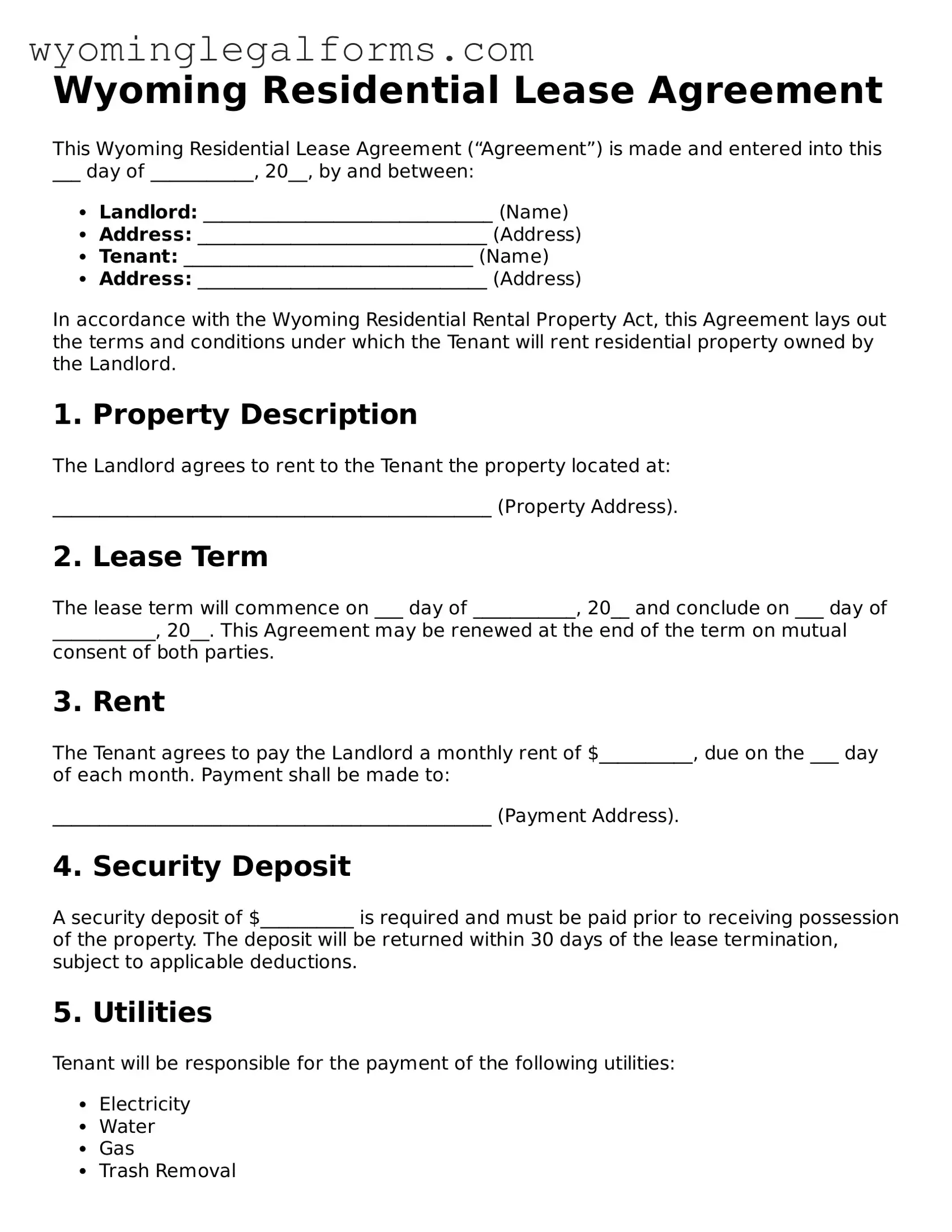Wyoming Residential Lease Agreement
This Wyoming Residential Lease Agreement (“Agreement”) is made and entered into this ___ day of ___________, 20__, by and between:
- Landlord: _______________________________ (Name)
- Address: _______________________________ (Address)
- Tenant: _______________________________ (Name)
- Address: _______________________________ (Address)
In accordance with the Wyoming Residential Rental Property Act, this Agreement lays out the terms and conditions under which the Tenant will rent residential property owned by the Landlord.
1. Property Description
The Landlord agrees to rent to the Tenant the property located at:
_______________________________________________ (Property Address).
2. Lease Term
The lease term will commence on ___ day of ___________, 20__ and conclude on ___ day of ___________, 20__. This Agreement may be renewed at the end of the term on mutual consent of both parties.
3. Rent
The Tenant agrees to pay the Landlord a monthly rent of $__________, due on the ___ day of each month. Payment shall be made to:
_______________________________________________ (Payment Address).
4. Security Deposit
A security deposit of $__________ is required and must be paid prior to receiving possession of the property. The deposit will be returned within 30 days of the lease termination, subject to applicable deductions.
5. Utilities
Tenant will be responsible for the payment of the following utilities:
- Electricity
- Water
- Gas
- Trash Removal
Any additional utilities will be agreed upon by both parties and noted here: ______________________________________.
6. Maintenance and Repairs
The Tenant must maintain the property in good condition. Any damages should be reported to the Landlord immediately. Responsibilities for maintenance can be outlined here:
_______________________________________________.
7. Rules and Regulations
The Tenant agrees to comply with the established rules and regulations set forth by the Landlord, which may include:
- No smoking on the premises.
- No pets without prior consent.
- Noise restrictions during late hours.
8. Termination
Either party may terminate this Agreement by providing a written notice ___ days in advance. Specific conditions under which termination may occur:
_______________________________________________.
9. Governing Law
This Agreement shall be governed by the laws of the State of Wyoming.
10. Signatures
By signing below, both parties acknowledge and agree to the terms and conditions outlined in this Agreement.
Landlord Signature: ____________________________ Date: ___________
Tenant Signature: ____________________________ Date: ___________
**End of Agreement**
